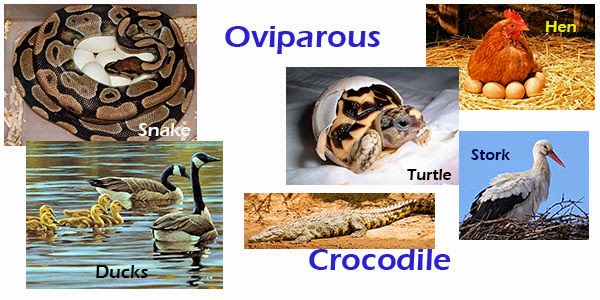Remember...
...animals can be classified into different groups based on their characteristics:
- VERTEBRATES have a backbone.
- INVERTEBRATES do not have a backbone.
How do vertebrates eat?
Animals eat other living things.
In the food chain of an ecosystem, they are consumers because they are living things that obtain energy by eating other living things.
There are three types of consumers:
Carnivores: eat meat.
Herbivores: eat plants.
Omnivores: eat both plants and meat.
Mammals have different types of teeth and birds have different types of beaks depending on the food they eat. This is because living things adapt to their environment. All baby mammals drink their mother´s milk.
Some herbivores mammals are called ruminants. They have four stomachs to get all the nutrients. These animals chew plants and swallow them. Then food returns to the mouth and they chew it more. Next, they swallow it again to complete the digestion. Cows, giraffes and sheep are some examples of ruminants.
Ruminants chew all the time because of their special way of digesting food.
How do vertebrates breath?
Respiration is the exchange of gases inside the animal body: they take in oxygen and expel waste carbon dioxide.
Different animals have different organs to breathe:
Mammals, birds and reptiles breathe through their lungs.
Fish breathe through their gills. They take in oxygen from water that enters their body through their mouth and waste carbon dioxide leaves through the gills.
When amphibians are young, they are aquatic animals and breathe through their gills. During metamorphosis, their gills close and they develop lungs. Adult amphibians can live both, on land and in water, so the exchange of gases can also take place through their moist skin in water.
How do vertebrates reproduce?
Most animals reproduce sexually. This method requires a male and a female of the same species. The ova, or the eggs, produced by the female, are fertilised by the sperm, produced by the male.
Animas can be:
Viviparous: the embryo grows inside their mother's womb and she
gives birth to live offspring. Also they drink their mother´s milk
until they can find their own food. Almost all mammals are
viviparous.
around the egg protects the embryo. The egg also contains all the
nutrients it needs to grow. These eggs will later hatch into new
offspring. Birds, fish, reptiles and amphibians are oviparous.
the mother´s womb until just before hatching. So they are a
mixture between oviparous - laying eggs to reproduce -
and viviparous - developing inside the mother's body. The youngs
depend entirely on the yolk sac of their eggs, they do not receive
any additional nutrients from the mother. Later, the mother gives
birth to live offspring.
Some fish, reptiles and amphibians are ovoviviparous.
Groups of invertebrates:
Arthropods: have an external skeleton called an exoskeleton.
- Insects: 3 body parts (head, thorax, and abdomen), 2 antennae, 6
legs and 1 or 2 pairs of wings.
- Arachnids: 2 body parts (cephalothorax: head+thorax, and abdomen),
8 legs and up to 8 eyes.
- Myriapods: long thin segmented bodies. Many pairs of legs and 2
antennae. They live in dark, damp places.
- Crustaceans: 2 body parts (cephalothorax and abdomen). Hard
exoskeleton like a shell. 8 legs and 2 claws. 4 antennae.
Molluscs: have soft body
- - Gastropods: Snail, limpet, ...
- Bivalves: Mussel, clam, ...
- Cephalopods: Squid, octopus, ...
Echinoderms: live at the bottom of the sea. They are covered by a hard, spiny skin. (e.g. starfish)
Sponges: live in water. They are the simplest invertebrates. They have no muscles, nervous system or circulatory system.
Annelids: have a long, soft body with moist skin. Many of them are parasites and live inside the bodies of other animals. Most annelids live in water, but they can also live on land.
Cnidarians: live in the sea. They have a soft, jelly-like body with an opening that is surrounded by venomous tentacles. (e.g. jellyfish)





Comments
Post a Comment